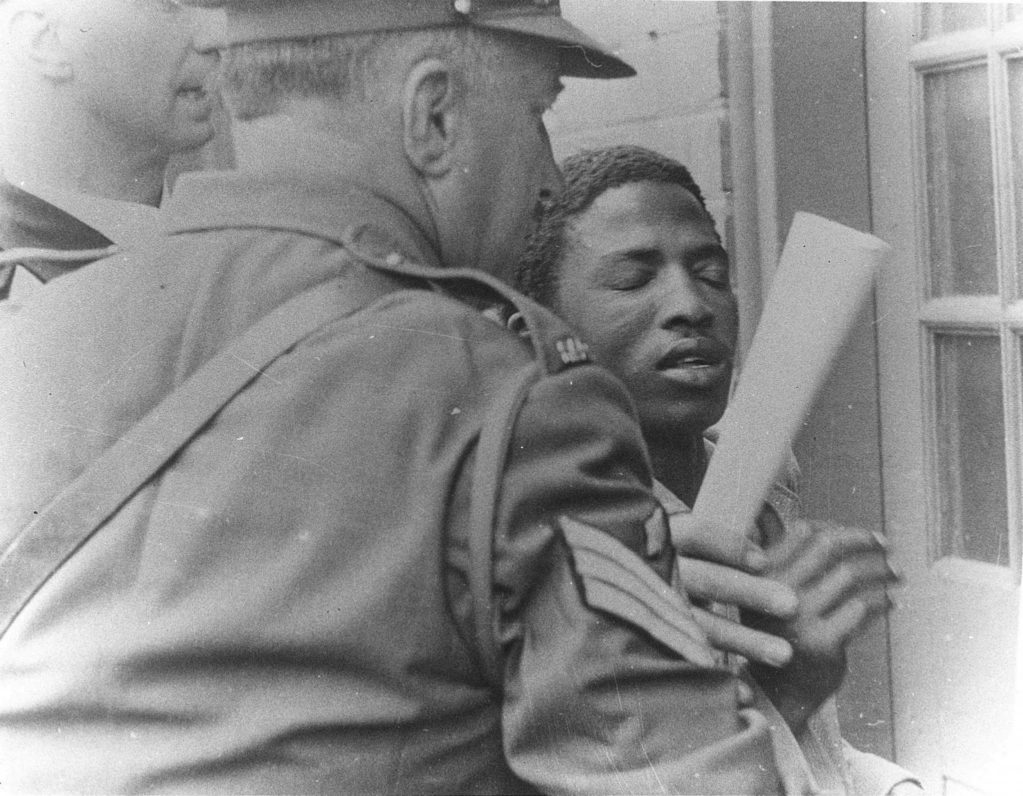Sixty one years ago, Peter Magubane took his first picture. It was another world in 1954, most of Southern Africa wasn’t free. South Africa was under the heel of JG Strijdom and apartheid divided the country. This was the uncertain and unequal world 22-year-old Magubane was thrown into with a camera around his neck.
Magubane was born in Vrededorp and raised in the multicultural suburb of Sophiatown, Johannesburg. He worked for DRUM; the magazine in everyone’s home.
”I began to read DRUM magazine, who were writing about social issues that affected black people in South Africa, then I said this is a magazine I want to work for,” says Magubane.
He was employed as a driver and given a camera by DRUM editor Thomas Hopkinson. He worked alongside other greats, like photographer Bob Gosani and chief photographer Jurgen Schadeberg. He looked through the lens and never looked back.
Magubane recalls going outside the country and documenting poverty in Africa.
Loading...
“Someone wanted to stop me and I said ‘no, I am here to document, this is the truth of what is happening. Let my camera eat, it is hungry,’” he says
Magubane told the story to his inheritors, more than 100 students, young professionals and media houses at the Market Photo Workshop gallery in downtown Johannesburg. It was tough in his day as a photojournalist. Police kept him in solitary confinement for 586 days for taking pictures and sending them out of South Africa.
“I was arrested for doing my job,” he says.
He was so passionate about photography he remembers saying to himself that when he got out, he was going out with his camera again. Soon after Magubane was released, he was banned for five years and couldn’t work as a photographer. That wasn’t going to stop him.
Magubane used to dodge through back doors to take pictures and return under the cover of darkness. One night he came back to find his house on fire. He recalls looking at his house and saying: “damn, they’re fighting back.”
Magubane was quick, he had to be. One day he was sent to Zeerust, a small town in the North West province, to cover a trial ringed by the police. He knew before he left Johannesburg that he wasn’t welcome.
“I went to the nearest shop and bought myself a half loaf of bread, I scooped the inside of the bread, I put my camera in there and I walked around eating my bread taking pictures. The police were so dumb that I had this bread the whole day, and when I was through with that I went and bought myself a pint of milk, I threw the milk out and put my camera inside and I continued taking pictures,” he says.
Magubane used a Leica M3 camera, small enough to hide inside a loaf of bread, a box of milk or a bible. One of his undercover assignments was to photograph mineworkers. He went in with a dust coat, the camera underneath.
“I walked in there, I saw what was going on. Men were stripped naked, being examined. There was no need for them to be stripped, whatsoever. And I took my pictures, I shocked the entire South Africa with those pictures, because no one had ever gone into the mines and taken those pictures, but this son of Magubane did, because I was not afraid.”
Magubane spent years photographing during apartheid, and got caught up in it: the Treason Trial, where he was arrested in 1956 and released after four days; the Women’s March in 1956 on the Union Building in Pretoria for the abolition of passes for women, the Sharpeville Massacre in 1960 where 69 people were killed and over 200 injured, the 1976 Soweto Uprising, right up to the release of Nelson Mandela in 1990. Magubane became his personal photographer.
Post 1994, after all the blood and violence, Magubane took his camera to capture the beauty of South Africa, the colorful side that the world didn’t know.
He exhibited work internationally in the United States and Germany and also featured in National Geographic, The Times in London and LIFE magazine.
“My editor told me to never allow yourself to be told what to take and what not to take. And I was prepared to break the apartheid rules with all my might and I’m glad that I did. When I sit at home going through my pictures, I say ‘yes, son of Magubane, you have done justice to this country, you have done justice to yourself.’”
Loading...
